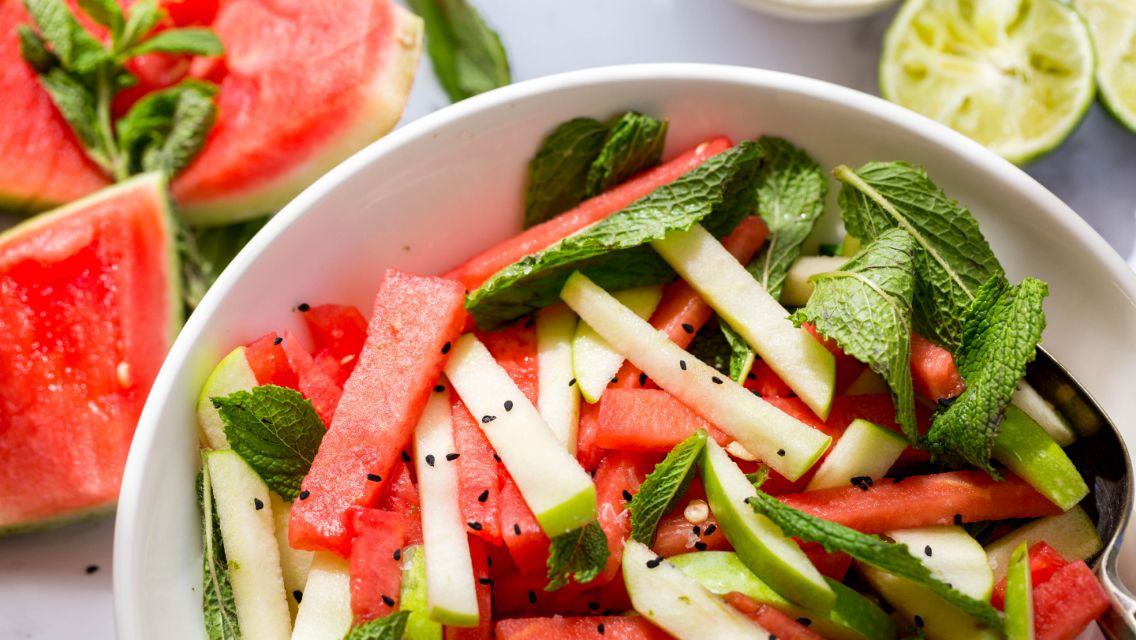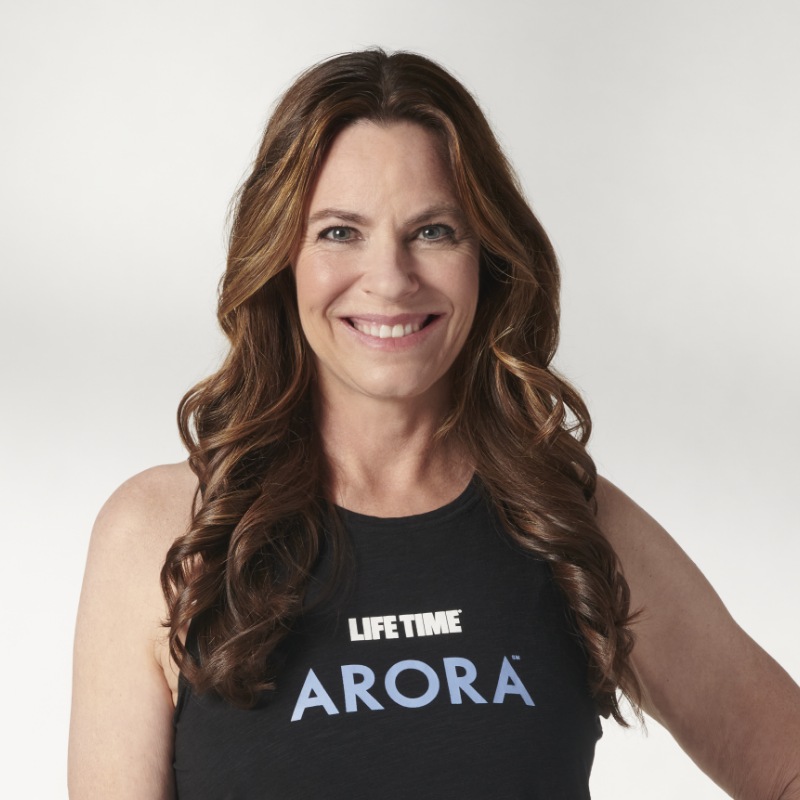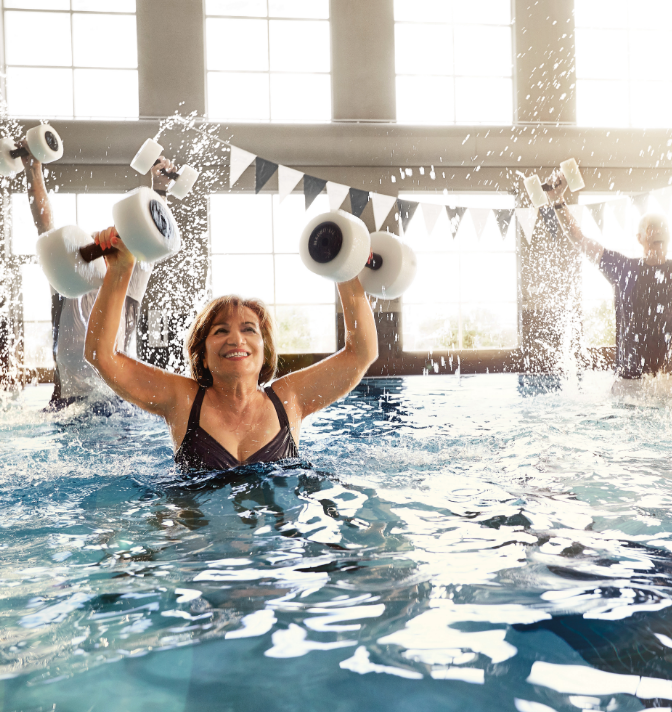Last week I turned 53, and I am proud to declare that. Our society has taught us not to talk about our age as we get older, yet I wouldn’t want to be in any other stage than this one. I am blessed with a wonderful family and a purpose-driven life, which includes my role leading ARORA and the Healthy Planet initiatives for Life Time, as well as my work as a board member of a local animal rescue.
Every other year on my birthday, I vowed to be healthy by the next one — when I turned 39, 49, 52. I’m happy to say that I finally achieved the health that I desired for so long through several important lifestyle changes, including improved nutrition.
I had been struggling with my weight for the past decade. As is the case for many people, the weight gain didn’t happen over night: Year after year, I inched up a few pounds — until I weighed in last year too-close-for-comfort to a milestone I swore I’d never hit.
I felt like I had tried (and failed) at everything — from fad diets to Weight Watchers. Sure, I’d lose a some weight at first, but then I’d stop and gain it all back; the approaches simply weren’t sustainable.
I knew Life Time’s philosophy — a “lifestyle change” — was different but that was scarier to me than trying the latest trend. Yet after 11 years of working here, gaining weight over each of those years, I decided it was time to really commit to Life Time’s nutrition guidance as I was working to launch the ARORA program; I wanted to walk the talk.
I started with the Life Time D.TOX program as a reset. After consulting with a nutrition expert, I started eating three healthy meals per day with lots of protein and vegetables. And I cut out snacks, which the nutritionist recommended to help get my blood glucose to normal levels (it had creeped up into the 120s).
This was a game-changer for me. I had long been a grazer, snacking as I made dinner and into the evening after our meal. I go to bed early, so I was essentially eating right up until I went to sleep, which was putting my body’s focus on digestion, when it should have been on repair, recovery, and rest.
I also stopped tracking what I ate, as the practice made me obsessive about food rather than nutrition. (This isn’t recommended for everyone, as tracking can be an important tool for understanding your eating habits and helping guide you toward sustainable changes.)
I worked two other things into my weekly plan: a restaurant date-night with my husband (usually chicken wings or a burger) and a few sweet treats. I keep a jar of bite-size dark chocolates on hand and enjoy a few per day if I feel like it. I also love ice cream, so I occasionally eat a smaller dinner to leave room for a small dessert immediately afterward.
Unlike past nutrition “plans” I followed, this moderated approach doesn’t feel restrictive; in fact, it’s been freeing to be able to still enjoy the things I love. And because I’m focusing on high-quality, nutrient-dense, high-fiber foods, I’m not craving sugar or the other things I would have reached for without much thought just a few months ago.
This is a sample of what I eat most days:
- Breakfast: Greek yogurt with fruit or a Life Time protein shake (typically vegan vanilla with frozen fruit). On weekends, I eat eggs (which we get from the 15 hens we keep on our hobby farm) with veggies and bacon.
- Lunch: usually leftovers from dinner. If I don’t have extras to bring, I visit the LifeCafe, where my favorite item is the Southwest Bowl with avocado. I probably eat this twice a week.
- Dinner: various meats with roasted vegetables or salad. I live in the country, so I have an array of local beef, pork, and chicken in my freezer. One of my hobbies is fishing, so I also have fresh-caught walleye pike (local) and halibut and salmon (from our annual trip to Alaska). Gardening in another of my hobbies, so in the summer, most of my veggies come from my garden; I supplement from local farmers’ markets. My favorite vegetable is whole roasted parmesan cauliflower.
The right nutrition isn’t complete without supplementation. Before I began developing ARORA and researching what 50-plus-aged bodies need, I was not big on supplementation. Now I take numerous supplements daily as I understand the role they play in my health, down to the cellular level. (I’ll share more on this in a future blog post.)
I am finally on a healthy-eating plan I can sustain — which has been Life Time’s philosophy all along. There is no quick fix, and when I finally embraced better nutrition — and paired it with consistent exercise (like Pilates and ARORA classes) — I began seeing lasting results. I am passionate about helping more people gain this kind of awareness, information, and knowledge so they too can feel confident making choices that support their goals.
In May we hosted our first national ARORA Nutrition Workshop. If you missed it, you can get a quick recap here (watch for the next one in late fall). You can also check out numerous recipes, or try one of the Weight Loss programs in the Life Time Digital app and get started on your own nutrition journey.





